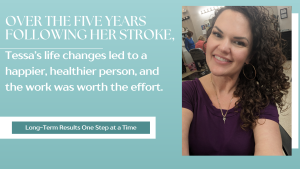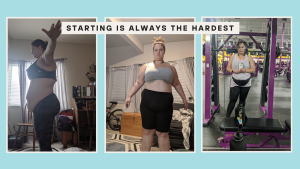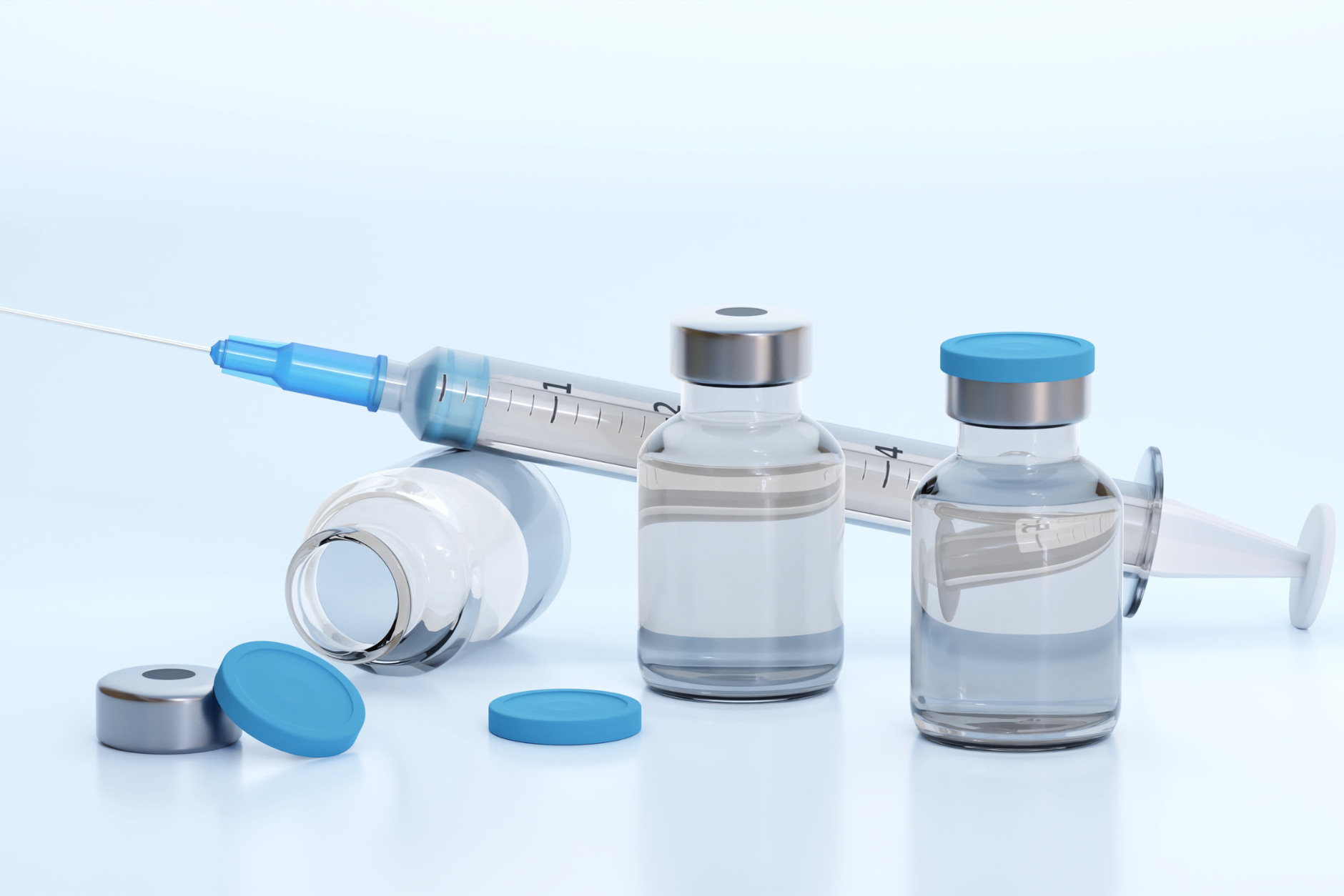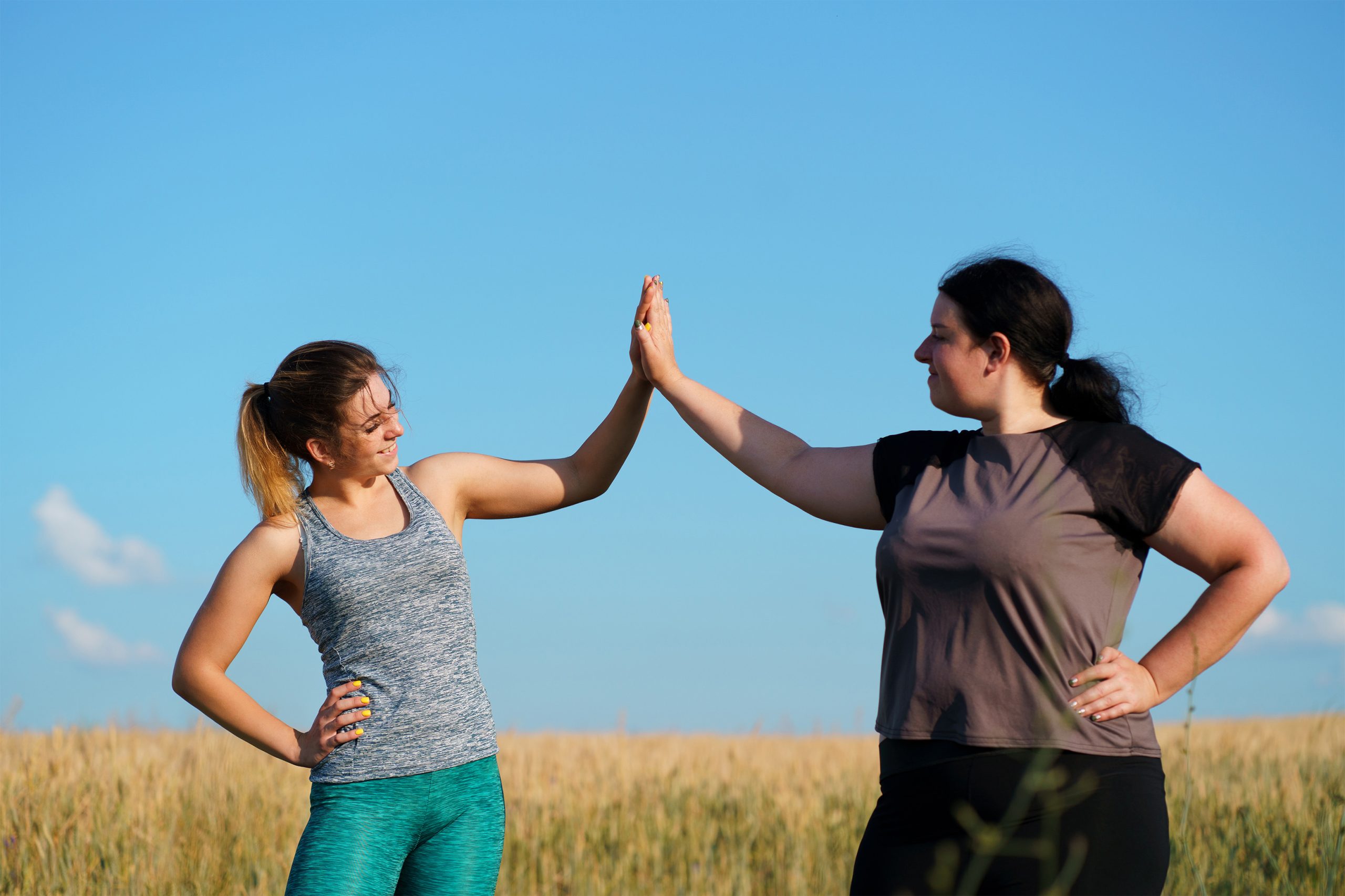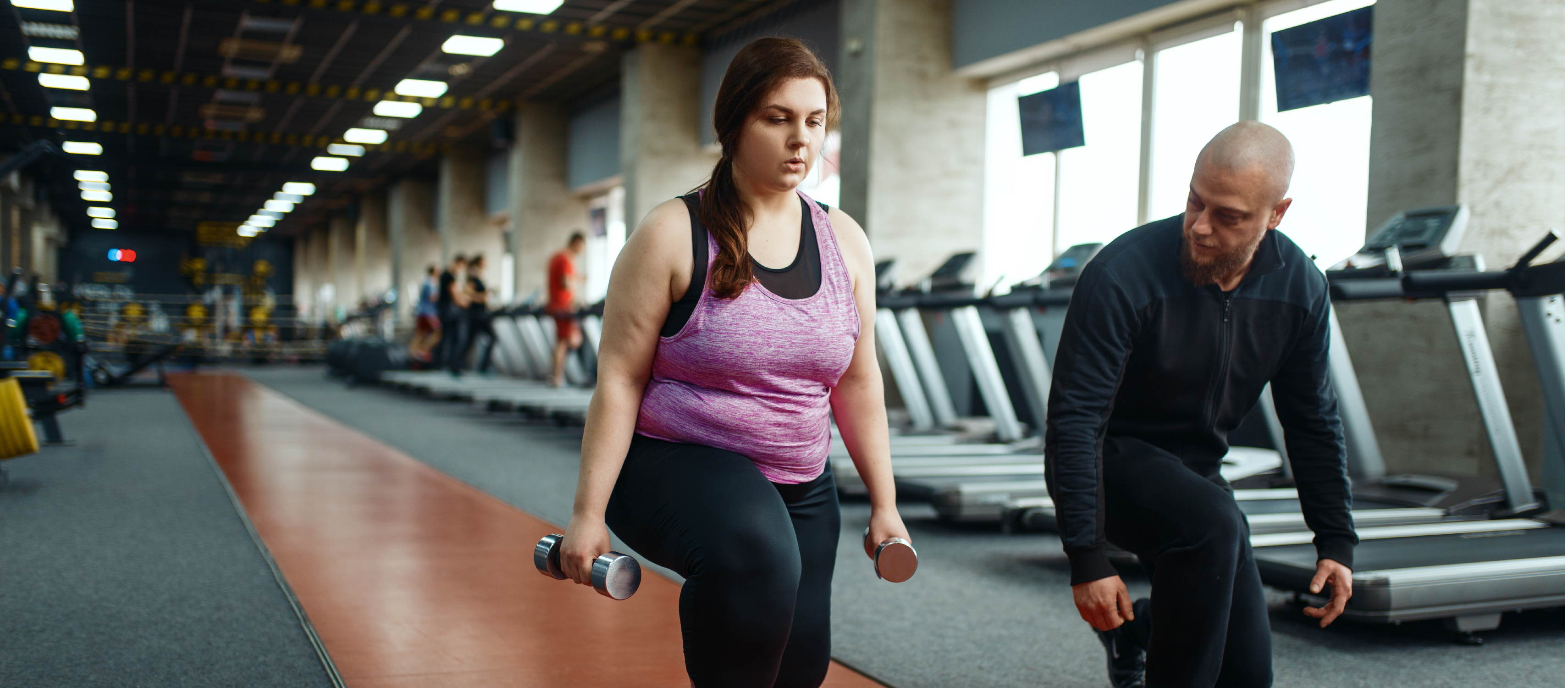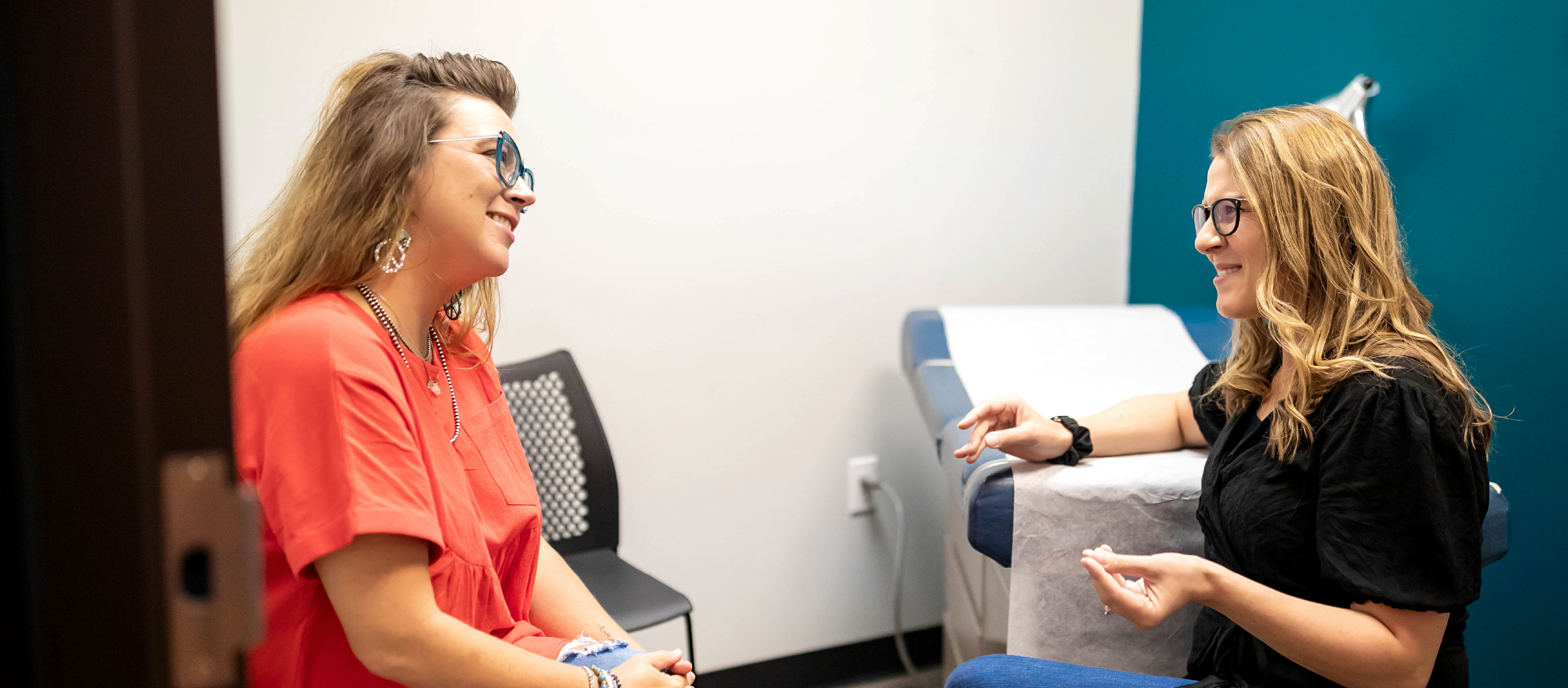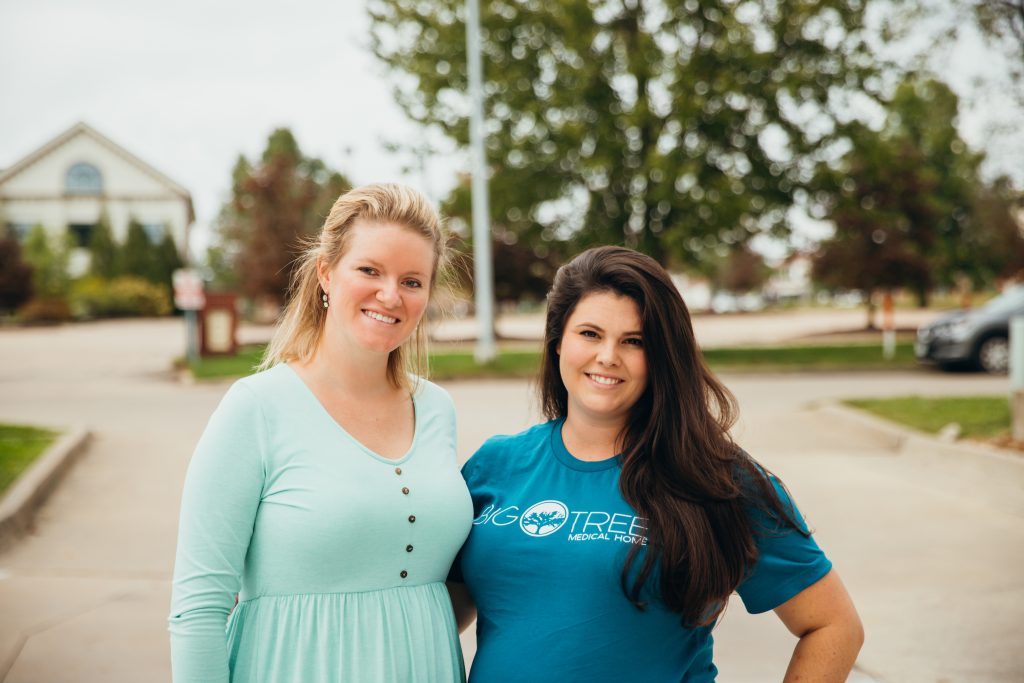Tessa Glenn is a business owner of Curl Whisperer, single mom of two, and recent fitness enthusiast, having completed three 5K runs in the last 2 years. Finding this happy place in life didn’t come easy following a stroke at the young age of 33.
Tessa’s life changed forever when, in 2017, with two blood clots and no medical insurance, she felt despair with nowhere to turn. She was living on food stamps and raising her two children alone.
Two blood clots and symptoms on both sides of her body had Tessa looking for medical help. Her lack of insurance made her an undesirable candidate, even in the ER. Tessa found Dr. Adam Wheeler at Big Tree Medical, a monthly membership based primary care service based in Columbia, Missouri.
Dr. Adam Wheeler and Tessa agreed her first step was getting off birth control pills and starting a blood thinner.
A Major Surgery Changed Tessa’s Life
In the fall of 2018, Tessa experienced severe stomach pains and found herself back in the ER. Dr. Wheeler at Big Tree Medical promptly arranged for her admission to the hospital. There, she discovered she had a ruptured abscess on her fallopian tube, which had filled her abdomen with an infection, causing adhesions that stopped her intestine from working. She needed major exploratory surgery, antibiotics, and another week in the hospital.
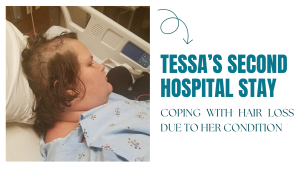
In early 2019, she developed a noncancerous uterine fibroid on the inside wall of her uterus. The fibroid abscessed and burst, causing her excruciating pain and necessitating a blood transfusion. The doctor informed her that if it grew back, they would need to remove her uterus.
Just ten months later, the fibroid had grown back, leading to a cascade of additional health issues. Being on blood thinners, she experienced continuous bleeding. She learned Fibroids will begin to grow again once they start receiving adequate blood supply, and will eventually reach the point they start degenerating again, causing a painful cycle.
With hemoglobin levels dangerously low, Tessa felt very tired and weak. it became necessary to remove Tessa’s uterus completely. Tessa underwent an Abdominal myomectomy. She would stay in the hospital for 2 days and then recover at home for 2 to 6 weeks. Tessa’s weight was 317 pounds.
January in Missouri can bring its fair share of cold temperatures along with snow and ice. Tessa ventured out on a cold winter day and slipped on a patch of ice – the resulting compound fracture would put her in a wheelchair. She couldn’t lift her original weight because of the surgery, which meant she was wheel-chair bound.

Pain, discomfort, and inconvenience disrupted any silver lining she thought was on the horizon. She felt defeated. Worse, because her house was not equipped for a wheelchair, she couldn’t even fit into her own bathroom.
Tessa remembers laying in bed after coming home from the hospital thinking “What am I going to do with my life when I get up?”. It was a moment that is so real even today when she thinks about it because it was at that moment she decided she was going to change her lifestyle. “I couldn’t live like that anymore”.
After 12 weeks of healing it was time to go back to work and the exact week the government shut down the entire country for COVID. It was at this time that Tessa focused on learning about the ketogenic diet.
She started exercising in small amounts. The combination of the keto diet and getting her body to move was the turning point in Tessa’s journey.
New Obstacles and a Team That Wouldn’t Give Up
After many hospital visits, blood transfusions, and a broken leg, she regained her footing with further help from Big Tree Medical.
Dr. Wheeler ordered a blood test to determine why Tessa had a stroke after a VP shunt was placed. The test revealed she had a Factor V Leiden mutation, requiring her to be on blood thinners for the rest of her life to prevent further clotting issues.
The factor V Leiden mutation is a genetic clotting disorder. Essentially, it causes thrombophilia, an abnormality that makes blood clot more quickly and frequently than it should. For Tessa, who lived a lifestyle prone to clots, this disorder heightened her risk of stroke. Women with this mutation are especially at risk during pregnancy or when estrogen levels heighten due to medication or supplements.
With this diagnosis in hand, Tessa could finally receive the care she needed to turn things around and reduce her risk of a second stroke.
Building Habits for Success
Knowing the root cause of her stroke was a big step forward, but Tessa needed to use that information to make informed changes. With help from Big Tree Medical, Tessa began changing small things one step at a time to rebuild her health.
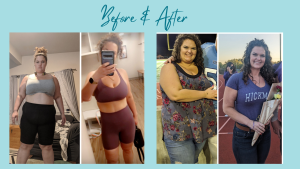
In her first year, Tessa diligently followed a balanced diet and regular exercise routine, shedding an impressive 60 pounds. The following year, she lost another 50 pounds. Over the course of three years, her unwavering dedication helped her lose a total of 135 pounds. Tessa’s journey was a testament to the power of perseverance and determination.
Some of the ways she undertook this new goal included:
- The big quit: Tessa stopped smoking to improve her lung capacity and reduce the risk of another stroke.
- Eating habits: She started a diet that didn’t restrict eating but made a significant impact on her weight. Tessa knew she wouldn’t stick to a typical low-calorie diet, as she found 1,200 calories daily unrealistic for her lifestyle. Initially, she chose the Keto diet, which allowed her to eat snacks and many of her favorite meals with a few alterations. This high-protein and high-fat diet restricts carbohydrate intake, so she made swaps like replacing bread with a side of greens. The following year, she switched to intermittent fasting and calorie counting to lose the last few pounds she wanted.
- Making deals: Tessa set realistic goals and made small promises to herself in order to keep them. This made her trust in herself.
All these small changes paid off over time, forming new habits and building self-awareness. But it wasn’t all smooth sailing just yet.
Ongoing Support for Ongoing Success
Ashlee Parks and Dr. Wheeler from Big Tree Medical played a huge role in Tessa’s rebound. No issue was too small, and the team made her feel seen and heard. Something like a migraine was treated quickly with an IV and some helpful advice.
Big Tree also worked with pharmaceutical companies to ensure the medication she couldn’t pay for previously was made affordable. Even going to the ER for emergency services changed when Big Tree stepped in on her behalf.
An Empowered Mom Makes a Comeback
Throughout all the trials and tribulations of Tessa’s time between her stroke and eventual recovery, she met obstacle after obstacle. As a single mother, things often felt harder than they had to be, but she persevered for herself and her children because she refused to give up on herself, her health, or her family.
Now, Tessa is 178 pounds. She exercises three days a week and works hard to show her children and herself that with the right mindset and support, anything is possible. Tessa often looks back on those times in her life when she needed food stamps and weight gain made it difficult for her to live life to the fullest, and feels grateful for the girl back then that worked hard to get her a second chance at an amazing life.
Long-Term Results One Step at a Time
Every recovery is different, and for Tessa, it was a marathon rather than a sprint. Long-term goals meant slow but lasting progress. Over the five years following her stroke, Tessa’s life changes led to a happier, healthier person, and the work was worth the effort.
Tessa found Big Tree Clinic when she needed it most. Working with Dr. Wheeler and Ashlee Parks, she was able to create goals and a plan of action that suited her diagnosis and lifestyle. Tessa is one of many patients who have found success through Big Tree Clinic.
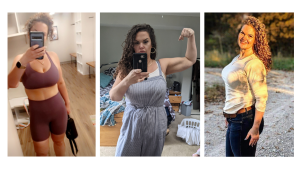
At Big Tree Medical, we specialize in making patient health a priority. We believe every patient matters, and healthcare should be affordable. That’s why we work closely with drug companies and other medical professionals to make healthcare and weight loss affordable. We work around shortages and develop bespoke treatments to meet unique cases through compound pharmacies and generic forms of big-brand medications.
